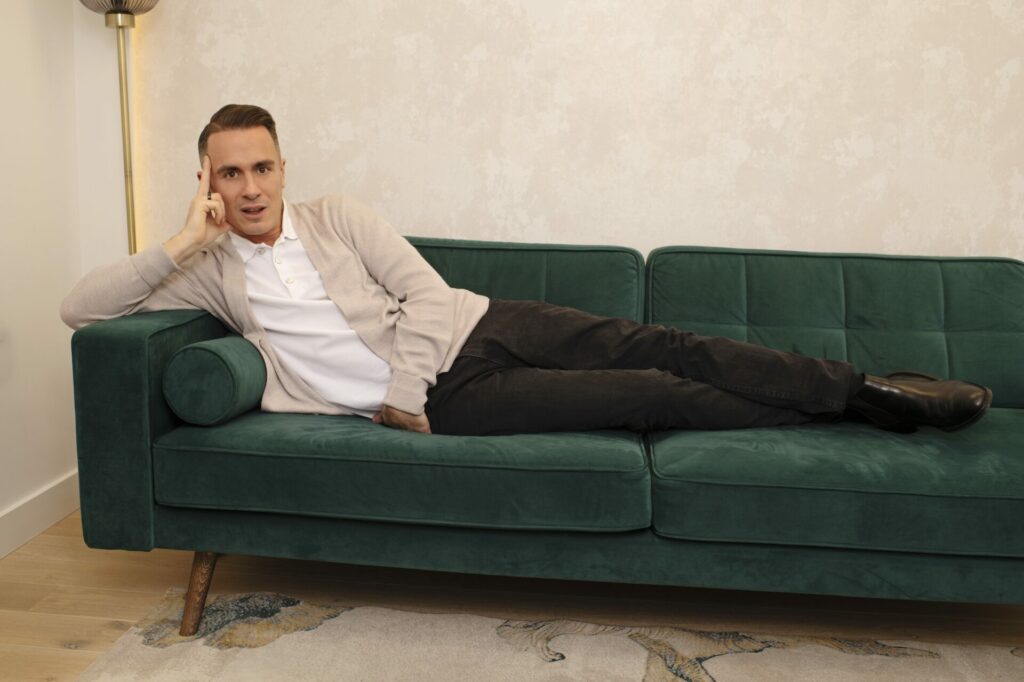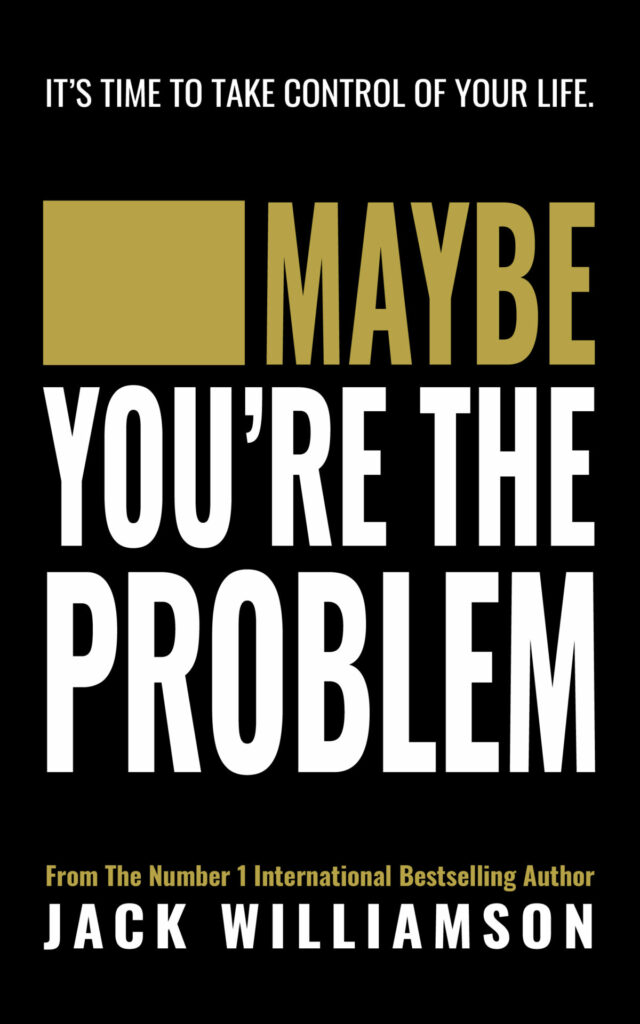‘Hiding in plain sight’: How the digital age fuelled a mental health crisis among gay men
Ahead of World Mental Health Awareness Day on Thursday 10 October 2024, psychotherapist Jack Williamson examines the impact of social media on humanity

The digital age was once hailed as a place to connect with others. Allowing individuals to build and forge new relationships with other people who share the same interests, hobbies and identities as themselves. For many in the gay community who had been ostracised by their own communities in the face of bullying, the advent of the internet was a welcomed lifeline. Those who had to hide or supress their identity for fear of rejection or mere survival, found a place they could be seen. Those living in the middle of nowhere with no access to any gay community, could now connect online with others from the community and realise they were not alone.
But things slowly shifted with the advent of Instagram at the turn of the last decade. The internet and more specifically social media moving from a place of connection to a platform of self-promotion. The algorithms of Meta and more recently TikTok curating our feeds, pushing through content that it deems the most engaging. Restricting the reach of content that it views less so.
The result of this change has caused a significant impact on the mental health of the gay community. The rise of controversial voices, amplified by the algorithms on these platforms, to espouse rhetoric that is damaging to marginalised societies such as the LGBTQ+ community. GLADD’s 2024 social media safety index report highlighted significant failures by all social media platforms to address and protect LGBTQ+ users from hate speech and harassment.
In a world that already feels unsafe for many who are subjected to homophobia, biphobia or transphobia; where hate crime against the community is up 112% in the last five years, this lack of moderation can compound feelings of isolation and loneliness. The digital age no longer providing a reprieve at the end of the day when they close the door to the real world. Instead, being met with similar or worse abuse online.
Another area the digital age is causing a mental health crisis amongst the gay community, is the unrealistic standards of beauty. The Greek adonis historically heralded by the gay community as the ideal physique. Top of the totem pole, is now being amplified and revered on social media. But not everyone is physically built that way, or able to commit the time and energy needed, not only to gain, but maintain this idealised physique.
Yet look at the majority of the gay community’s social media feeds and it will be filled with good-looking guys showing off their toned, tanned physiques. The use of lighting, filters, and angling, often distorting the reality. For Gen Z and the Alpha Generation who have grown up in a world where social media has always existed, the period of human development known as identity vs role confusion between the ages of 12 to 18, that’s now primarily being carried out online, tells them; if not on a conscious level, then a subconscious level, that having this revered physique will make you popular.
As their identities continue to be formed, every post, every story, every reel shared, is asking the question; like me like this? Their posts that get higher levels of engagement, being generated and shared more frequently. Their posts with lower levels of engagement, no longer shared or the frequency greatly reduced. If these physical forms are the ones being revered online, is it any wonder we are seeing younger generations becoming more obsessed with their physical appearance? Of sharing the ‘best’ of themselves and not the rest of themselves.

And what is the price we as the gay community are paying for this obsession?
We as humans have two core beliefs; I am loveable, and I am enough. Exposure to homophobia, questions these two core beliefs. Creating a shame cycle within that tells us there is something wrong with us. That who I am or what I am is wrong. It also impacts two of the core needs we have as humans. To feel connected and to belong. Because of this, we look to seek validation and approval. To tell ourselves that we are loveable. That we are enough, and these days that is often carried out online.
Due to the gamification of both social media and dating apps, our neural pathways have become hardwired to seek instant gratification. The reward centres in our brains constantly chasing that next dopamine hit generated by the notifications, likes, shares, messages by these apps. If we are already seeking validation and approval owing to the shame we feel, identifying content that is performing well on social media and dating apps is then likely to drive us to replicate that content. To gain that validation we so desperately desire but lack. This had led to an increase in what is known as vanity validation.
The problem with this is people are no longer being liked for who they are but what they look like. Creating superficial and shallow connections, that leave a hollow and empty feeling inside. A chasm between what we as therapists call the true self and the idealised self.
This feeling is often exacerbated further in the online dating world. Apps like Grindr have been found to negatively affect body image through weight stigma, sexual objectification, and social comparison. Additionally, regular usage of these apps, has resulted in an increase in levels of body dysmorphia in the gay community and become a significant predictor of orthorexia (an unhealthy obsession with eating healthy foods).
For those who have been afforded pretty privilege, or who are naturally able to retain the revered Greek Adonis physique, when using platforms like Grindr, Hinge etc, they will likely find themselves perform well on these apps, achieving their desired intentions. But is the frequency within which they are engaging with their desired intentions positively or negatively impacting their mental health in the long term? On the other side, those who perceive themselves as not performing well on the apps, is that compounding a negative core belief about themselves. That they are unlovable? That who they are is not enough?
The generations who came of age before the digital revolution, would often congregate in gay bars and clubs, that provided refuge to the community from the heteronormative society that we live in. A place where they could go to be themselves. Free from the oppression caused through societal shame and judgment. To forge friendships, go on dates, seek hook-ups and more. But since 2006, over 58% of LGBTQIA+ bars and clubs have shut down across the UK. The digital age playing a large (though not exclusive) role in the impact of these closures, with the gay community turning more to their phones to meet people, reducing the need to go to these spaces to meet other gay individuals.
With the continued eradication of these spaces for the gay community to congregate in, to connect with others and form deeper relationships, it’s no wonder that we are seeing reports of a loneliness epidemic. The office of national statistics reporting that over 27% of people in the UK experiencing loneliness on a regular basis. A statistic increasing to over 50% in major cities like London and New York.
It’s all good and well highlighting the problems and what’s to blame for it, but what about the solutions? What can we as the gay community do, to address these issues? To help support and improve the individual and collective mental health and well-being of our community?
From a top-down approach, we need to lobby the government to confront the issue of social media providing platforms for homophobic, biphobic and transphobic to be spread. To legally require these social media platforms to take more stringent measures to tackle and remove any form of hate speech. And for the government to hold these platforms to account in breach of these laws.
From a bottom-up approach, to improve our individual mental health and well-being in the gay community, we should be looking to evolve our relationship with and to social media and dating apps. Forming new, healthier habits to our engagement with these platforms.
This is likely to be different for each individual, but there are three main ways in which we can improve our mental health here. Firstly, we can close the chasm between our real-world selves and the distorted versions we post on social media. Not posting content, solely for the purpose of likes or engagement, but to allow our authentic selves to shine. This will enable us to attract quality rather than quantity online, enabling individuals to foster deeper connections. Secondly, we need to not look solely to social media or dating apps to validate ourselves. To find other ways to validate ourselves offline, and to start seeking validation from within, rather than outside of ourselves. And thirdly, to look at replacing the instant gratification social media and dating apps, for delayed gratification. To begin to rewire our brains, to appreciate and savour things, allowing deeper relationships with ourselves and others to be built.
From a community wide approach, we need to be creating more spaces in the real world not only to replace those we have lost in the gay community, but to complement those that still exist. To provide spaces for people to meet with and connect with other members of the community. There are already great signs of this happening in major cities around the UK, with hiking groups, running clubs, art classes etc, forming all the time. Hopefully more groups will emerge over the coming weeks, months and years. And as the gay community starts to evolve their relationship with the digital world, these spaces are likely to help have a positive impact on reversing the mental health crisis found in our community.

